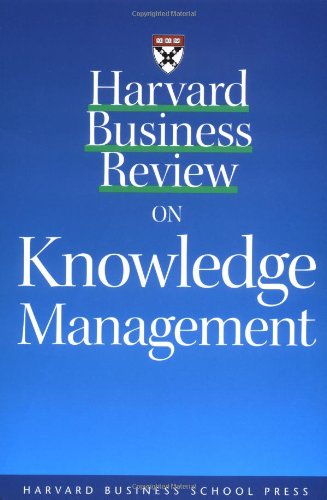No learning organization is built overnight. Success comes from carefully cultivated attitudes, commitments, and management processes that accrue slowly and steadily. – David Garvin

Why did I chose this resource?
It’s part of a really dense but valuable book. Each chapter is like a book. This is chapter 3.
What did you learn from it?
There are lots of people jumping on the bandwagon of “learning organizations” and “knowledge-creating companies” but few really do it well. It takes a discipline to do this. There are three major questions or issues that need to be raised:
- Meaning – What is a well grounded and plausible definition of learning organizations – it must be actionable and easy to apply.
- Management – We need clearer guidelines for practice filled with operational advice rather than high aspirations.
- Measurement – We need better tools for assessing an organizations’ rate and level of learning to ensure that gains have in fact been made.
Key Knowledge
- What is a Learning Organization
- A learning organization is an organization skilled at creating, acquiring, and transferring knowledge, and at modifying its behavior to reflect new knowledge and insights.
- Building Blocks
- Systematic Problem solving – Scientific method, data driven , statistical tools
- Experimentation – Ongoing programs, Demonstration projects, simple changes to systemic changes
- Learning from past experience – Internal failures documented and trained as “improvements”
- Learning from others – Going beyond our selves and looking at others’ successes and failures
- Transferring knowledge – Reports, tours, [videos] [presentations]
- Measuring Learning
- Increased learning rates should mean increased productivity and quality
- “Half-life curve” measurement – Companies, divisions, or departments that take less time to improve must be learning faster than their peers.
- First Steps
- Foster an environment that is conducive to learning – different types of activities, analysis, and brainstorming
- Open boundaries and stimulate exchange of ideas – each practice can learn from each other
- Create learning programs with specific goals and outcomes – what do we need to learn and perennial reviews
How are you using what you learned?
We have already put in place many of the ideas mentioned in this chapter – as a result of applying what we’ve learned, seeing what others do, and refining our method based on feedback. I think there is definitely room for improvement specifically to better ask the questions of meaning, management, and measurement.
Key Changes
- Look at each team as a learning organization within a larger shared corporate learning team
- Determine a curriculum for the teams and the company of “concepts” and then a process for outside knowledge
- Find ways to cultivate learning in other forms – discussions e.g. theme reviews , software reviews
How can we as a company or individuals in the company use this?
We can learn how to better manage our learning process by asking the questions about what does it mean to be a learning organization for us, how do we manage our learning, and how do we measure our learning.
Key Actions
- Reiterate team visions so that people know what they are learning for
- Determine the knowledge gathering, analysis, retrieval, and application process
- Measure the outcomes of learning – who’s reading what – how many times is something read
Source
- Name : HBR on Knowledge Management
- Author : Compiled
- Physical Book: DC Office

